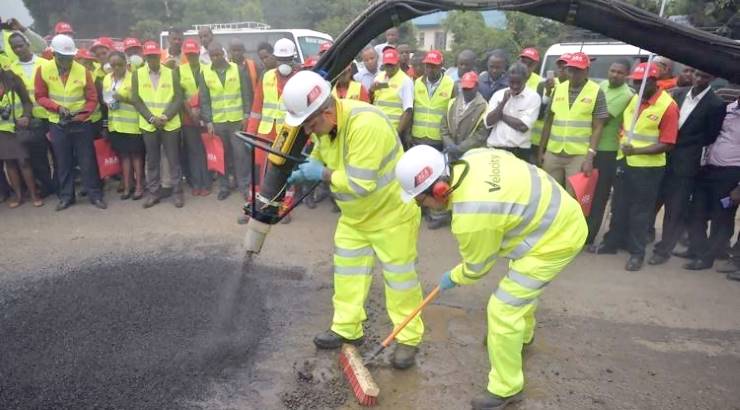Company News
UK Firm Has a Solution for Kenya’s Potholes Headache
Velocity’s ‘high velocity technology’ can fix a pothole in just two minutes.

Sunderland-based potholes fixer Velocity has brought into Kenya a solution that promises to hasten the country’s road repair initiatives – at a fraction of the cost.
The company has shipped in road repair machines that employ “high-velocity technology” to instantly repair potholes – with each hole taking an average of two minutes to fill.
The machine is mounted on a special truck with a powerful hose that sprays a mixture of cold bitumen and ballast into a pothole, sealing it at a fraction of the time it takes a conventional repair gang to do the job manually.
Kenya has been battling with the problem of potholes using traditional methods where a gang of up to five people dig around a pothole before filling it with hot bitumen and ballast, which are then compacted using road rollers.
The velocity machine does all this in one smooth operation, then moves on to the next pothole as traffic resumes its path over the newly fixed road.
Velocity has appointed Avery East Africa (AEA), a subsidiary of TranCentury Ltd., as the sole distributor of its machines in East and Central Africa, as the UK firm seeks to tap into the demand for its products in the region.
Each machine, which is operated by two skilled workmen, is priced at Sh50 million – including the cost of personnel training.
RELATED: JCB Machine That Seals Potholes in Under 8 Minutes
The machine is divided into several storage spaces, including those for bitumen and ballast, which are mixed before being sprayed.
According to AEA chief executive Nicholus Kithinji, the technology has registered success in the road construction industry, especially in developed economies such as Europe.
“This kind of technology, which has been tested and proven, makes the job easy and allows traffic to flow easily after a short while. It is also cost-effective,” said Mr Kithinji.
The high-velocity technology is expected to cut costs of road repair by up to 40 per cent, offering a reprieve to the national and county governments that are spending billions of shillings annually to fix roads.
Kenya is the second African country to adopt the new technology after South Africa.














